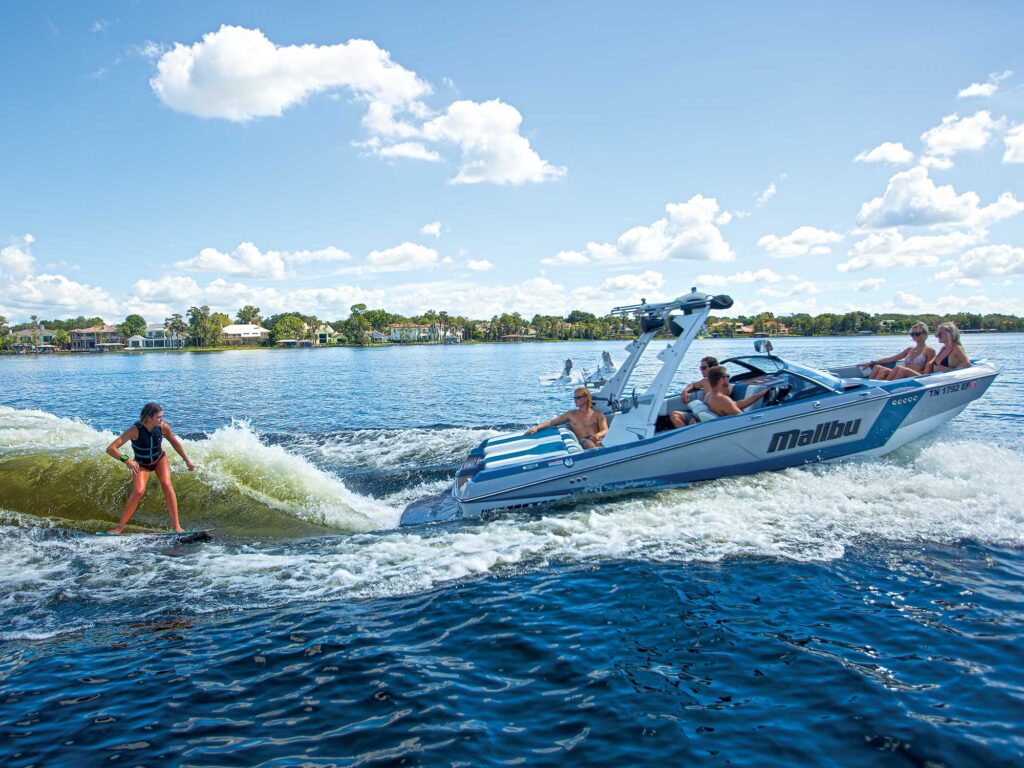Three Keys for Tow-Sports Safety
 Tow-sports safety is a collaborative effort.
Garrett Cortese
Tow-sports safety is a collaborative effort.
Garrett Cortese
Everyone loves highlight videos of watersports athletes pulling off amazing feats on Instagram and YouTube. But what you don’t see is the behind-the-scenes safety involved on the boat.
Having a safe tow-sports experience requires a strategy that minimizes risks and maximizes safety. Tow-sports safety is a collaborative effort among the driver, the spotter/passengers in the boat, and the person being towed. Here’s how everyone involved can keep tow sports safe.
Tow-Sports DriverThe driver bears the most responsibility for tow-sports safety because he or she controls the steering wheel and the throttle of the engine. Safety for the driver demands a mindset that prioritizes providing the person in tow with a safe and successful session while keeping the people in the boat safe. This mindset will develop the skills, awareness, and sensitivity for safe and effective driving.
A driver focused on safety decreases risks on the water. For example, a driver towing tubers who thinks the goal is to throw the rider from the tube leads to risks and injuries. There’s a big difference between the driver providing a fun tow and intentionally trying to throw them from the tube.
A key element for safe tow-sports driving is fully engaging with this mindset. This means eliminating all distractions that divert attention from driving. This entails putting away the smartphone and refraining from conversations with other passengers while the skier/rider/surfer gets into the water, during towing, or when they reenter the boat. Additionally, a tow-sports driver should never consume alcohol before or while driving the boat; this will impair judgment.
Read Next: Tow-Sports Driving Tips
Spotter/CrewThe duty of the designated spotter and crew in the boat is not to distract the driver with conversations during the tow session. Only the designated spotter should talk to the driver to relay a signal from the person in tow, such as go faster or go slower or for a hazard such as when another boat or personal watercraft is in the vicinity of the person in tow.
Passengers should always sit in a seat, never on the gunwale, and should not obstruct the forward view of the driver or the driver’s view of the tow-sport mirror. Passengers should also stay away from the tow line, except to retrieve the line back into the boat at the end of a session.
Person in TowBefore entering the water, the skier, rider or surfer (we’ll use “rider” from here on) should allow the line to stretch out fully. The rider should always communicate clearly when he or she is ready to get into the water so that the driver knows to keep the engine turned off. Once safely away from the boat, the rider should tell the driver so that the driver can start the engine and idle forward until the line is taut and the handle is in the hands of the person in tow.
When the person in tow is ready, then it is his or her duty to communicate with the driver. Hand signals should be used to avoid confusion or difficulty hearing due to engine noise, wind and distance. Teach these to your crew. Thumbs-up means faster. Thumbs-down means slower. Fist-up means stop. Pat the head means go back to shore. Two hands over head means “I’m OK” after a fall, Following a fall, the spotter should raise the orange rider-down flag in places where that is required.
If the driver is not sure about the command, then the driver should keep the throttle in neutral and ask the person in tow for clarification. It is better to be safe than sorry.
A safe tow-sports session should not be luck; it is a strategy and mindset that everyone aboard should adopt.
The post Three Keys for Tow-Sports Safety appeared first on Boating Mag.
- Home
- About Us
- Write For Us / Submit Content
- Advertising And Affiliates
- Feeds And Syndication
- Contact Us
- Login
- Privacy
All Rights Reserved. Copyright , Central Coast Communications, Inc.